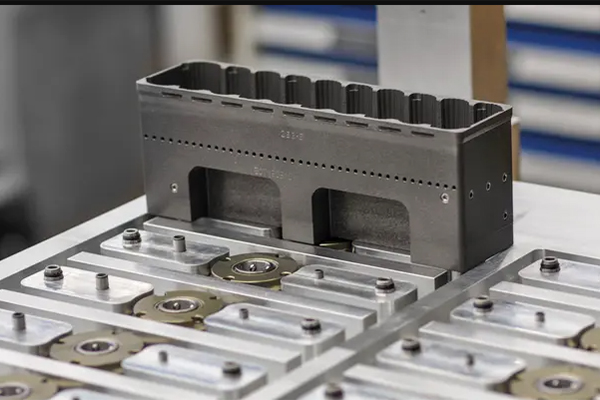Guide of Thermoforming Tooling
Thermoforming toolings are a key manufacturing equipment in the field of plastic processing and molding, and are usually made of high-quality metallic materials such as steel or aluminum. These toolings have specific shapes and structures used to heat and shape plastic materials. The design and manufacture of thermoforming toolings requires a high degree of engineering and precision to ensure the quality and consistency of the final product. In addition, thermoforming technology is widely used in various industries, mainly used to manufacture various plastic cases. If you would like to learn more about plastic cases, you can check out our article titled Custom Plastic Cases to help you make the right choice.

What is Thermoforming Tooling?
Thermoforming toolings are usually single-sided molds. Thermoforming is a plastic processing technique in which a sheet of plastic is heated to a pliable state and then formed into a specific shape using a mold or tool. Key components of a thermoforming tool include a mold designed with the opposite shape of the desired part, a heating element to soften the plastic, a vacuum system to draw the plastic to the mold, and a cooling mechanism to solidify the molded plastic.
Thermoforming tooling is classified into two main categories: “male” and “female.” Male tooling exhibits a convex shape that protrudes above the clamping surface. The plastic is draped over this shape and firmly held in position, conforming to the dimensions of the tooling. Conversely, female tooling is concave, causing the plastic to be drawn into the mold to attain the final shape. Male tooling offers cost-effectiveness and prevents surface markings on the plastic, while female tooling allows for the creation of more intricate designs and sharper corners.
The precision and quality of thermoformed products are significantly influenced by the design and quality of the tooling, which highlights the key role of thermoforming toolings in the thermoforming process.
Materials Used in Thermoforming Tooling
In large-scale manufacturing scenarios, thermoforming toolings are usually made of cast aluminum, machined aluminum, steel, and other materials. No matter which material is chosen, precise temperature control must be maintained to ensure even temperature maintenance and effective cooling throughout the process for optimal results. In addition, the selection of thermoforming mold materials should also consider factors such as part complexity and required surface finish. If you don’t know which material to choose, please contact Sungplastic’s professionals and we will choose the right material for you based on the advantages and disadvantages of each material.
Machined Aluminum:
Machined aluminum involves precision cutting from a solid aluminum block, often using CNC machining techniques. This method is typically favored for tooling fabrication due to its capacity to easily incorporate vacuum vents for air removal. Additionally, machined aluminum boasts minimal porosity, enabling intricate detailing.
Cast Aluminum:
Cast aluminum is created by melting aluminum and molding it into the desired shape. This approach is more cost-effective and yields consistent results with minimal warping. However, it necessitates the addition of more vacuum vents, which can impact the texture.
Steel:
Steel tooling is known for its durability and longevity. It is often used for high-volume production runs where tool wear is a concern. Tool steel, stainless steel, and other alloy steels are commonly employed.
Prototype Tooling Materials:
In cases involving extremely limited plastic runs or prototyping, cost-effectiveness is paramount. Consequently, tooling is often constructed from materials such as 3D printed plastic, epoxy, ceramic, fiberglass, wood, or Ren (engineered polyurethane board). These materials provide affordability and flexibility for prototyping and limited production runs.
Factors Influencing Thermoforming Tooling Selection
The choice of thermoforming tooling is influenced by various factors, each impacting the tooling design. Whether deciding between male and female molds or cast and machined aluminum, the following considerations are essential:
-
- Complex Design Features:
Considerations such as undercuts and draft angles in the design play a crucial role in thermoforming tooling selection. - Cosmetic Design Features:
Thermoforming tooling decisions may be influenced by the need for specific cosmetic design features. - Texture Requirements:
The desired texture on the final product can affect thermoforming tooling choices. - Chill Marks and Webbing:
The potential for chill marks or webbing in the production process should be evaluated. - Cost and Turnaround Time:
Budget constraints and project timelines will impact tooling decisions. - Production Volume:
Consider the expected product runs, as tooling choices may differ for high-volume production compared to low-volume runs.
- Complex Design Features:
These factors collectively determine the optimal tooling approach in thermoforming, ensuring alignment with project goals and product requirements.
Sungplastic Provides Thermoforming Services
Thermoforming is a processing method used to manufacture plastic parts and products that provides an efficient production method suitable for high-volume production, while also meeting the needs of low-volume injection molding and prototyping.
Sungplastic is an experienced injection molding manufacturer. We are not only proficient in thermoforming technology, but also master a variety of other injection molding processes. We have a professional manufacturing team capable of precision manufacturing of various parts and products. We offer fast turnaround times to quickly meet your custom needs. Contact us today to start our collaboration.
Get a free quote and design analysis today.
We’ll reply to you within 6 working hours.
We respect your privacy.
+86 139 2927 4777 (WhatsApp, Wechat)
